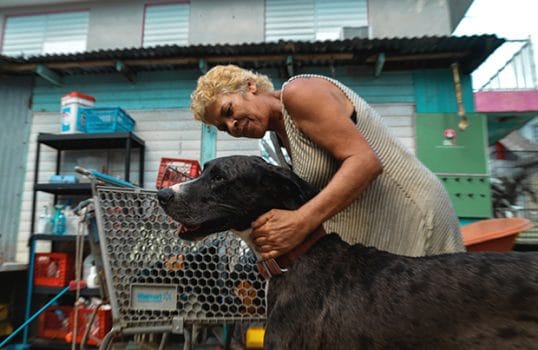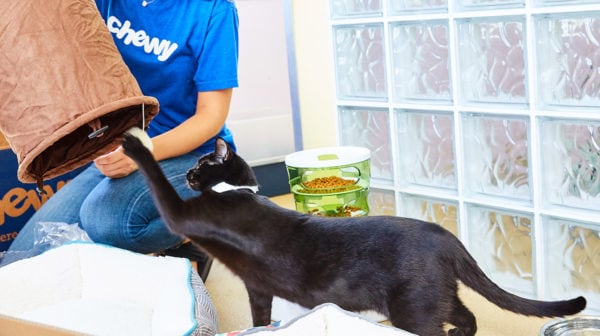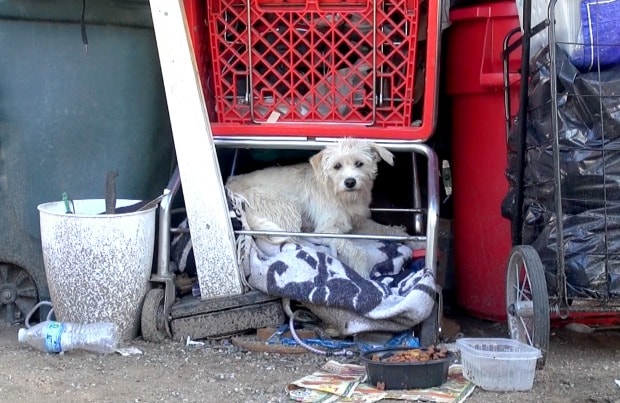“When I say shelter, people imagine a big structure. This is our shelter,” Sylvie Bedrosian says. “It’s in the back of a house, in a poor neighborhood.”
Bedrosian gestures toward a compact maze of fenced metal housing: there’s a section for puppies, another for big dogs and a separate area for the sick or injured in treatment so they can recuperate more peacefully.
This modest backyard, behind a bright pink house, serves as the headquarters for Save A Sato, one of Puerto Rico’s longest-running nonprofit rescues. At any given time, the shelter is home to between 100 and 150 dogs and puppies.
As the island recovers from one of the worst storms in it’s history, there’s much work to be done and many needs to be met. Right now, the vast majority of the island’s residents are without power and more than half are still without water. Access to drinking water—as well as food, working ATMs and gas—is limited, and especially difficult to find throughout the west coast and central area of the island, where damage to property and loss of life was most devastating.
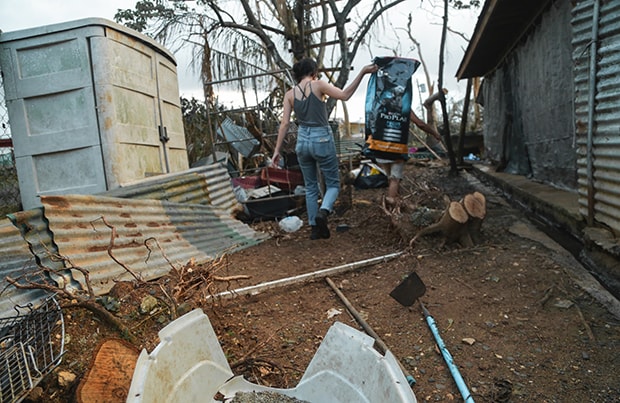
What’s happening in Puerto Rico is, without a doubt, a serious humanitarian crisis.
But the stray population of cats and dogs needs help, too. The number of homeless animals in Puerto Rico is difficult to quantify; some reports claim 300,000 satos (slang for street dogs) and more than 1,000 cats as of 2016. Anyone who’s visited the island, and the Puerto Rican residents themselves will confirm, that the count is tragically high and these animals are perpetually in desperate need of help.
Save A Sato is one of several local organizations that works tirelessly on their behalf. Founded more than 20 years ago as one of the first of its kind, the shelter has been rescuing and rehabilitating abandoned and abused dogs with meager means, but bountiful love and endless compassion. Working in tandem with a network of rescues, they find forever homes, both on the island and in the States, for these once-neglected animals.
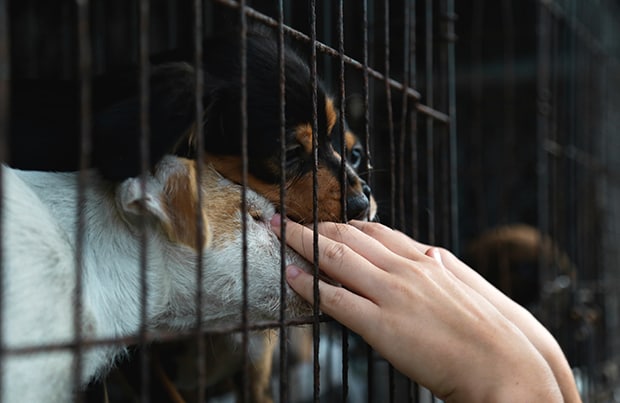
Ahead of the unforgiving 150 mph wind speeds of Hurricane Maria, Bedrosian and other volunteers scrambled to temporarily relocate more than 50 dogs to a nearby home that would better ensure their safety. All of the animals survived, but there was significant damage to the shelter.
“It’s not easy; you have to clean all the dog kennels, get them in the car, take them, come back, and see the results—which is basically that the hurricane destroyed everything,” Bedrosian says. “You don’t even know where to start. Everything was a mess.”
Volunteers rallied and repaired, replacing parts of the structure and cleaning up debris. But gaps in the roof remain vulnerable to rain or flooding and the play area was severely affected.
“It’s been a challenge, but at the same time, it’s been incredible how many people have responded and have come to help,” Bedrosian says. “You have to help everyone, but we can’t forget that Gloria [Marti] is someone who’s been here for years and she’s older, and she’s alone, and any help she can get is welcome.”
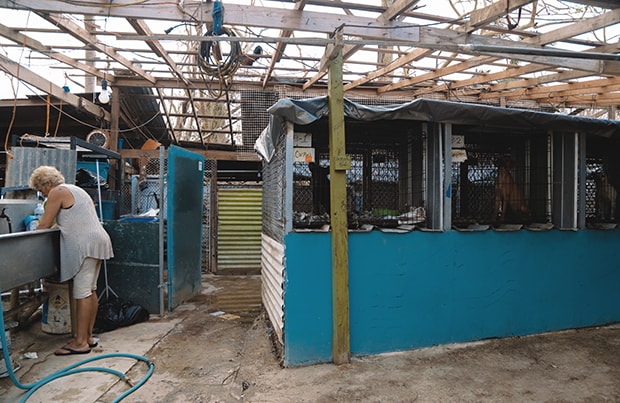
Marti is the longstanding leader of the organization, a hands-on caretaker who is at the shelter seven days a week. Bedrosian describes Marti as a character full of quirks, like one in a Pedro Almodovar film. She inherited the role in 2008 after the founder passed. What was a few dogs when Marti took over rapidly became 10, then 20, and the pack hasn’t stopped steadily growing since. Bedrosian says it’s not uncommon to return from the shelter area to find abandoned dogs waiting for rescue.
“You’ll be working here, and all of the sudden there’s a dog tied up out front, or a box of puppies. Or someone arrives crying, saying they rescued a dog and can’t care for it,” Bedrosian says. “It’s hard to say no. I understand, because I don’t know how to say no [either], especially when there’s need.”
Helping hands aren’t lacking at Save A Sato, and at the moment, the food supply is healthy. The security of incoming donations, however, is potentially at risk. Without power, most Puerto Ricans are out of work and it could be months before the island’s infrastructure is fully restored. This all comes on the heels of Hurricane Irma, which caused a power outage that left many unable to generate income. Fundraising from within, all things considered, seems an unreliable means of keeping the shelter functioning as it has been.
Then there’s the rebuilding of the structures destroyed at the shelter, and the likely surge in pets in need of rehoming as some Puerto Ricans make the tough decision to leave, hoping to earn for themselves and for their struggling families on the island.

Fortunately, the shelter was recently energized with help: Animal Haven Shelter, a Manhattan-based nonprofit, working alongside the multi-program organization Guardians of Rescue, had selected 14 dogs to fly to New York.
Bedrosian helped translate for Marti: Orange duct tape on a dog’s nameplate means they’re headed for the Big Apple. They chose the most adoption-ready pets in hopes of speeding the process to make room for more; once these pets are transported safely, they’ll return to gather a second round of animals.
Save A Sato shares resources and connections with other local organizations, too. One of those is Save A Gato, whose focus is the colony of cats around its Old San Juan base of operations.
Through TNR (trap, neuter, return), they work to contain the population by diligently caring for this sizable drove of cats, readying as many as possible for fostering or adoption and lovingly monitoring the rest. They are also currently collaborating with rescues, shelters, and individual animal activists outside the island to relocate cats to the U.S.
Marti, Bedrosian, and volunteers will continue to strive daily to newly fortify the shelter, all while providing excellent care for the satos and working constantly to place them in permanent loving homes.
Nothing will keep them from their commitment to Save A Sato—but extra help from outside the island could be key in meeting new needs, and amplifying positive results.
Images via: Jo Cosme

Jhoni Jackson is a freelance writer based in San Juan, Puerto Rico, where she’s grateful that her two oddball cats, an aging but feisty Chihuahua, and an energetic new puppy permit her to live in a home that is clearly under their total control.
Share:
